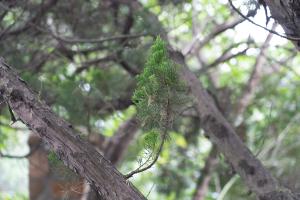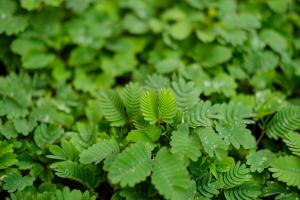What Group of Plants do Fir Trees Belong to?
Fir trees are a group of evergreen coniferous trees that belong to the Pinaceae family. The Pinaceae family is a group of trees and shrubs that produce cones and needles as their leaves. Fir trees are one of the most popular and well-known trees in this family, known for their tall and narrow shape, dense foliage, and pine-like scent.
The Anatomy of a Fir Tree
Fir trees have a distinct anatomy that sets them apart from other trees in the Pinaceae family. They have a tall, straight trunk that can reach up to 60 meters (200 feet) in height. The trunk is covered in thick, scaly bark that helps protect the tree from fire and other types of damage. Fir trees also have a dense canopy of dark green needles that grow in spiral patterns along the branches. These needles can vary in length from 1 to 4 inches, depending on the species of fir tree. Finally, fir trees produce cones that are upright and tend to grow near the top of the tree.
The Different Species of Fir Trees
There are several different species of fir trees, each with their own unique characteristics. Some of the most common species include the Douglas Fir, Balsam Fir, Noble Fir, and Frasier Fir. The Douglas Fir is known for its strong, durable wood and is often used in construction. The Balsam Fir is one of the most fragrant of all fir trees and is commonly used as a Christmas tree. The Noble Fir has a more symmetrical shape than other fir trees and is used in many decorative applications. Finally, the Frasier Fir is a popular Christmas tree due to its dense foliage and excellent needle retention.
The Importance of Fir Trees
Fir trees are an important part of many ecosystems around the world. They provide food and habitat for a variety of wildlife, including birds, squirrels, and deer. Fir trees are also valuable sources of lumber and are commonly used in the construction industry. Finally, fir trees are often used as ornamental trees and are planted in parks, gardens, and other public areas for their beauty and ease of maintenance.
Conclusion
In conclusion, fir trees belong to the Pinaceae family and are an important group of evergreen coniferous trees. They have a unique anatomy and come in several different species, each with their own unique characteristics. Fir trees are an important part of many ecosystems, provide valuable resources to the construction industry, and are commonly used as ornamental trees. Whether you are admiring them in a forest or decorating them in your home, fir trees are a beloved and iconic part of our natural world.

 how many times do yo...
how many times do yo... how many planted tre...
how many planted tre... how many pine trees ...
how many pine trees ... how many pecan trees...
how many pecan trees... how many plants comp...
how many plants comp... how many plants can ...
how many plants can ... how many plants and ...
how many plants and ... how many pepper plan...
how many pepper plan...































